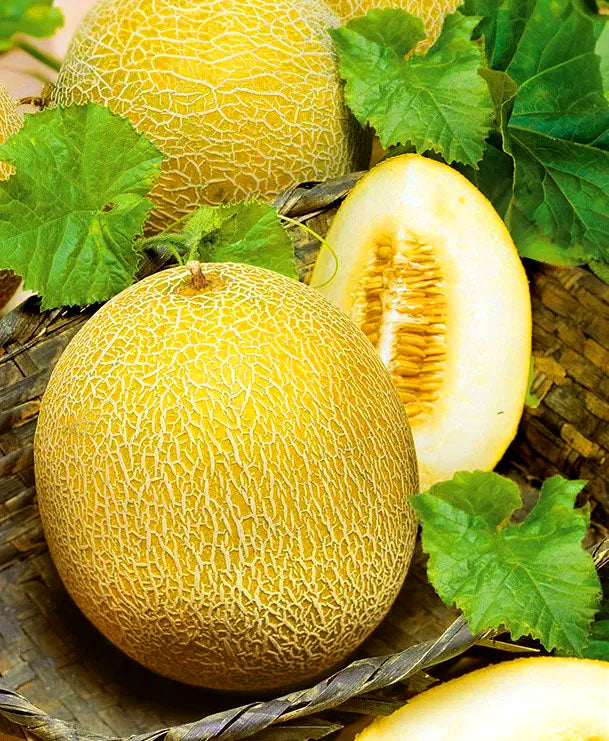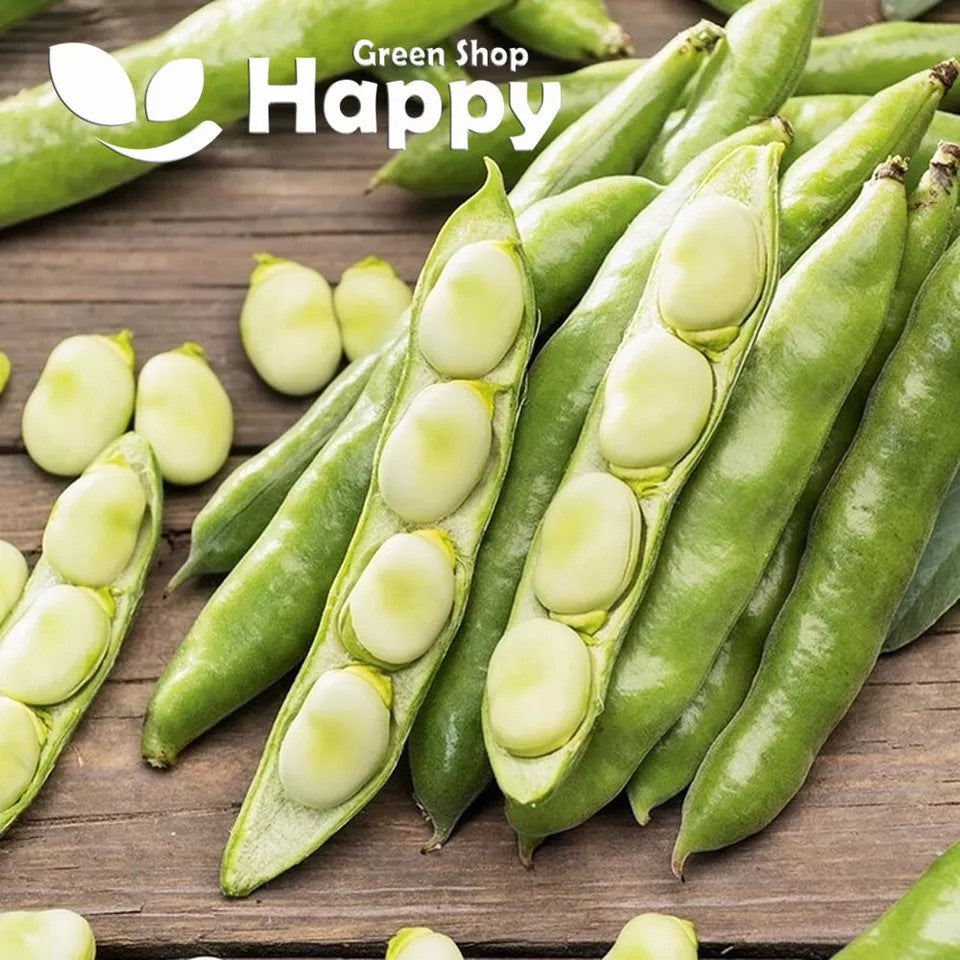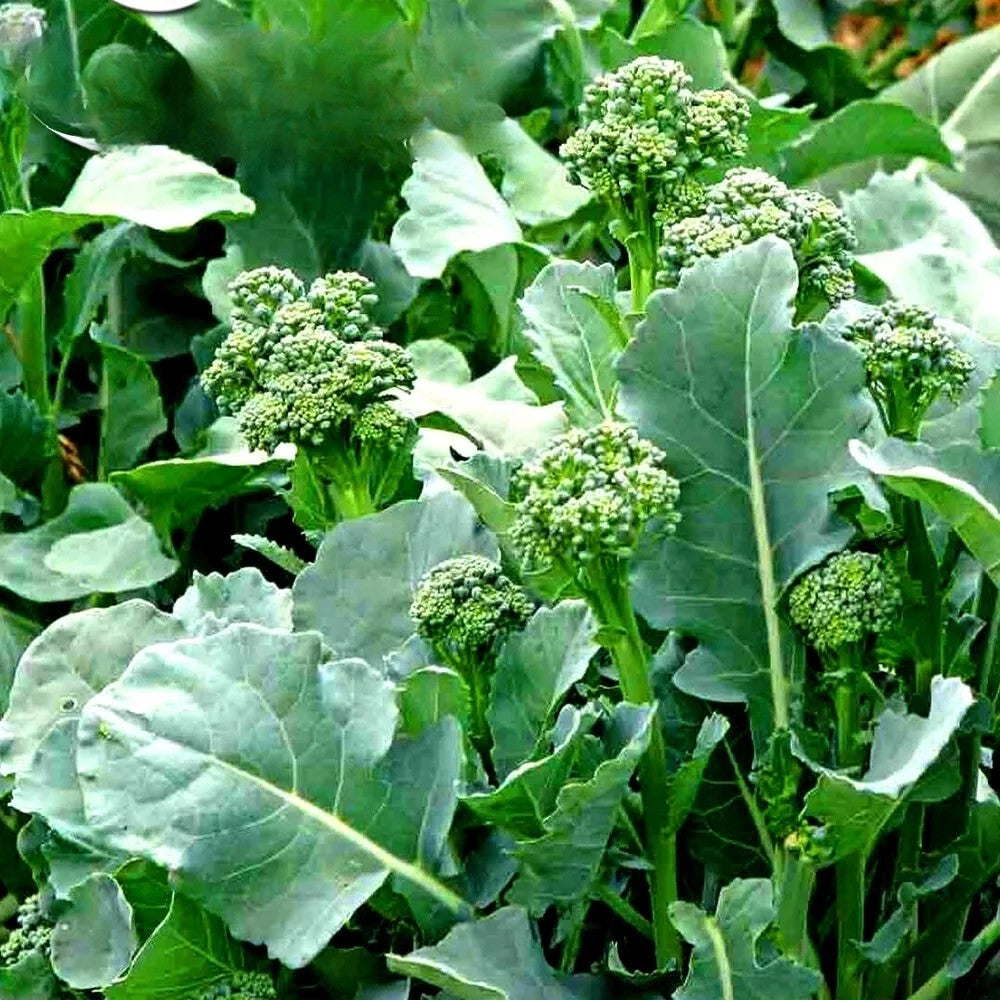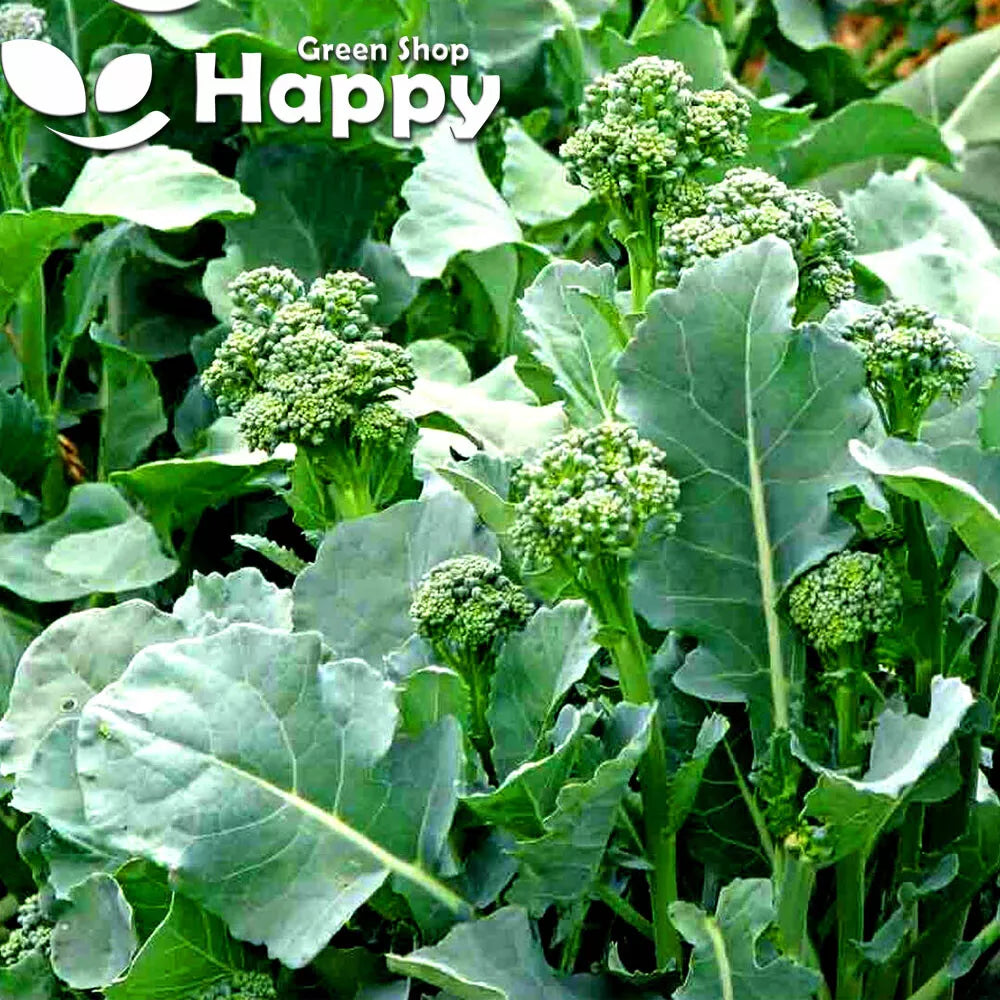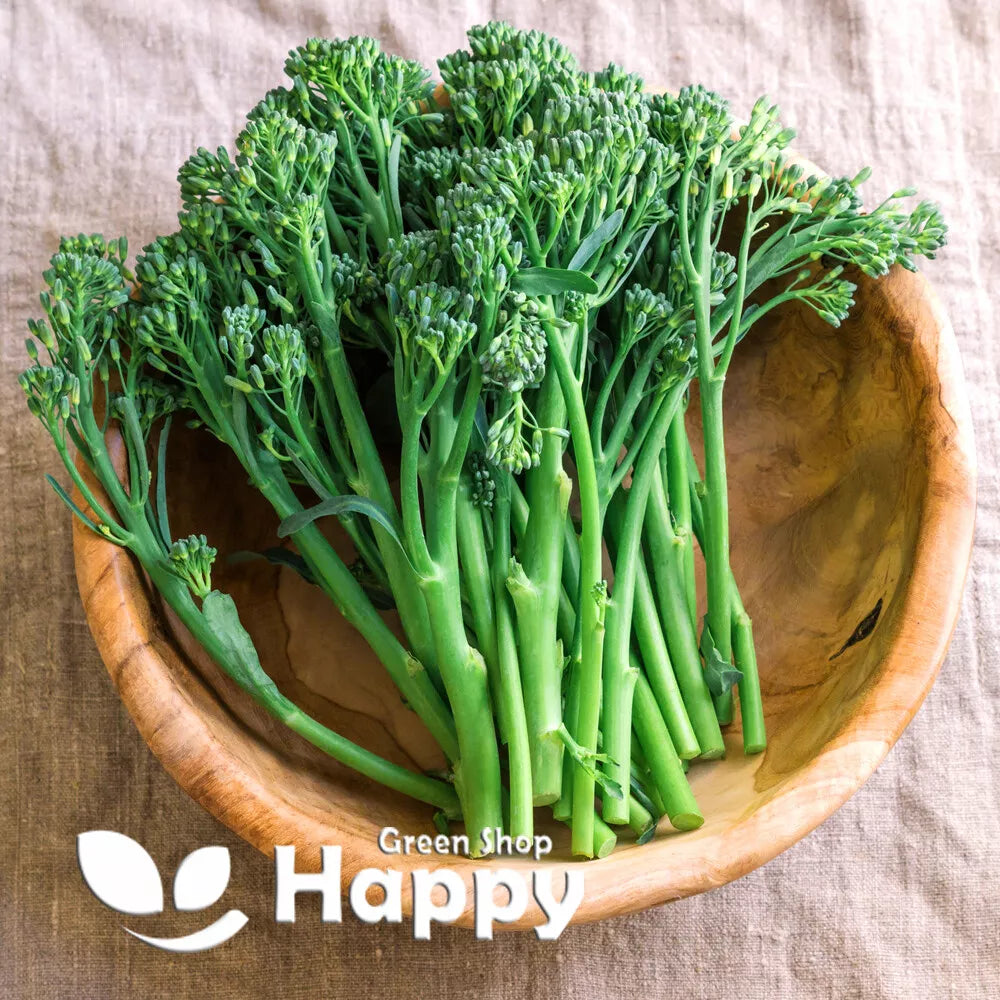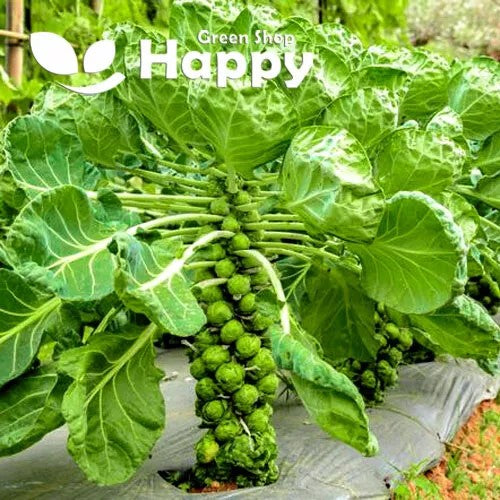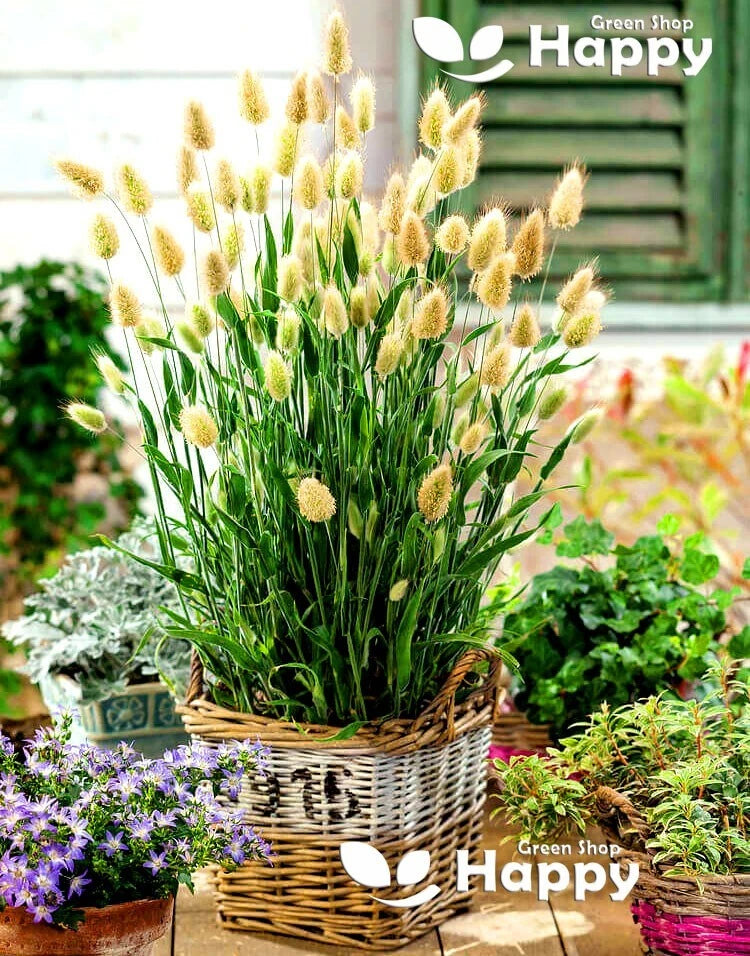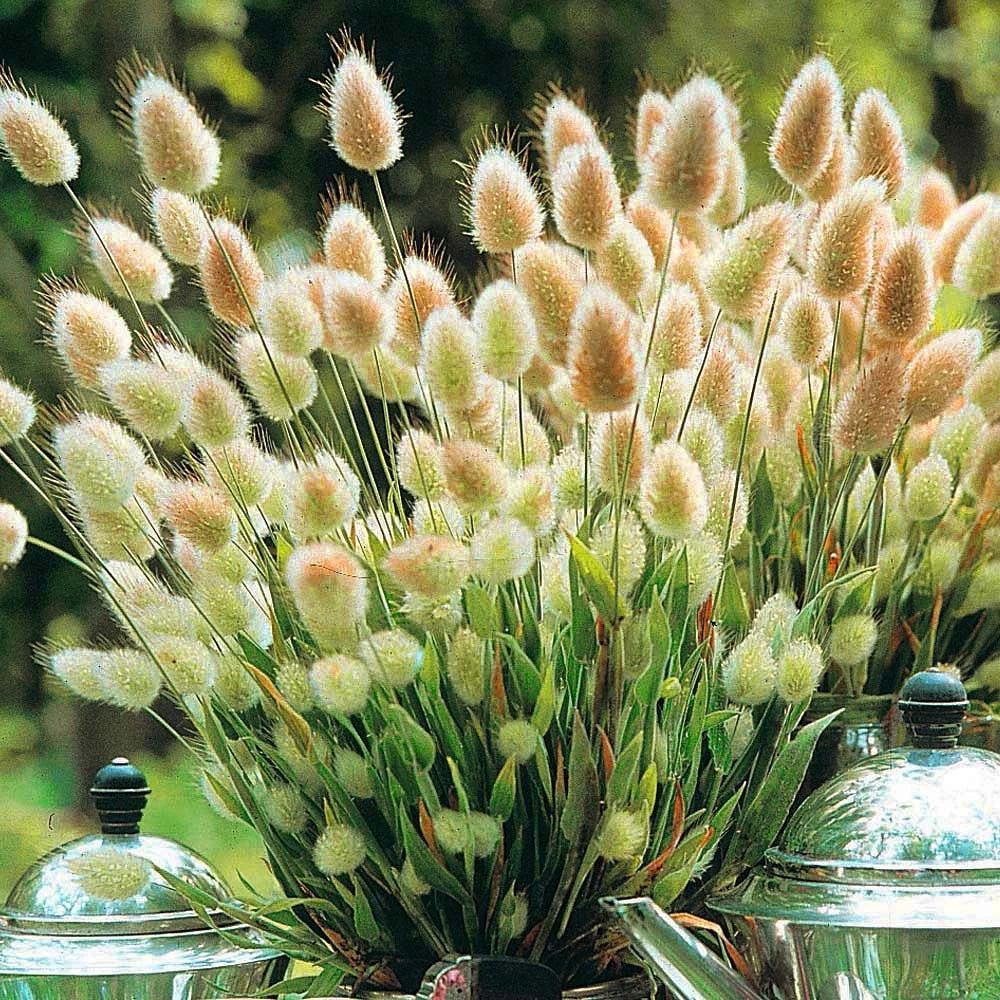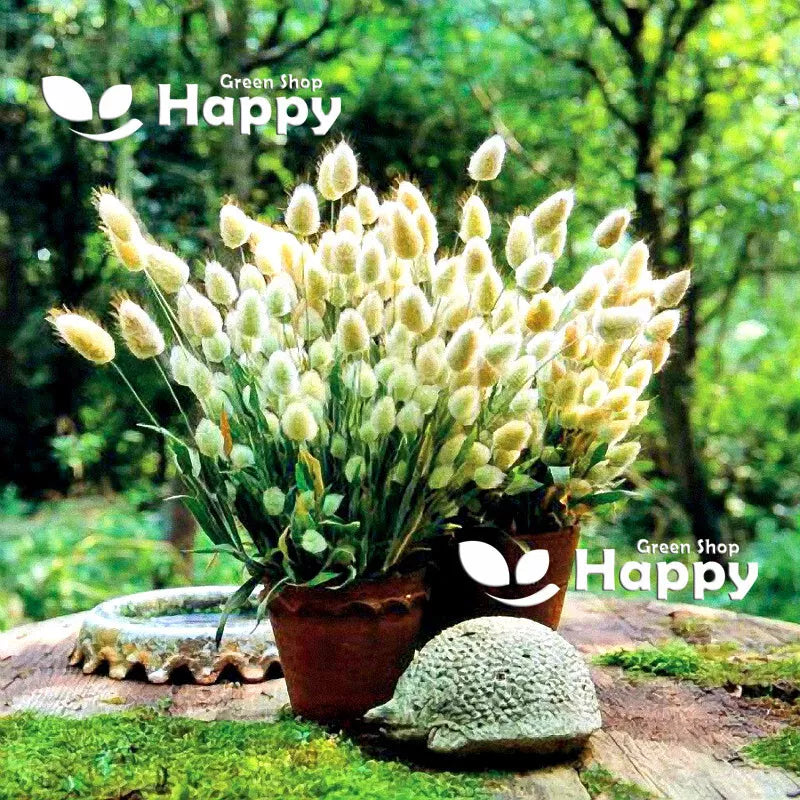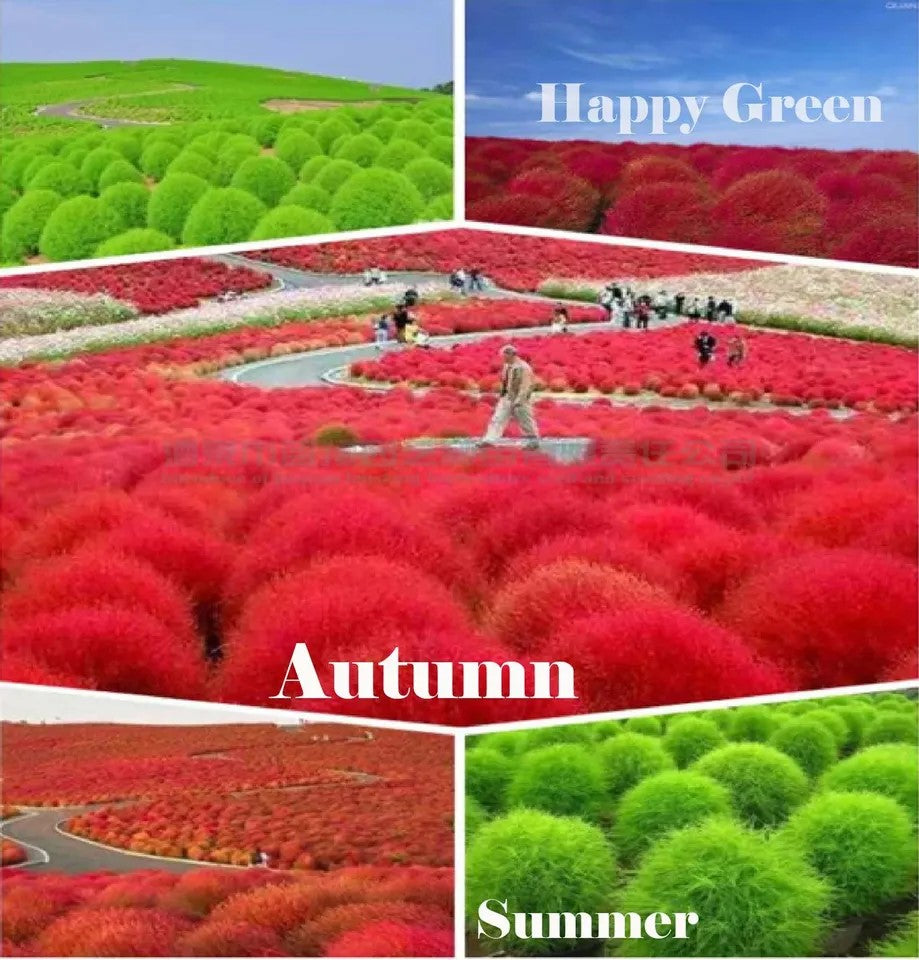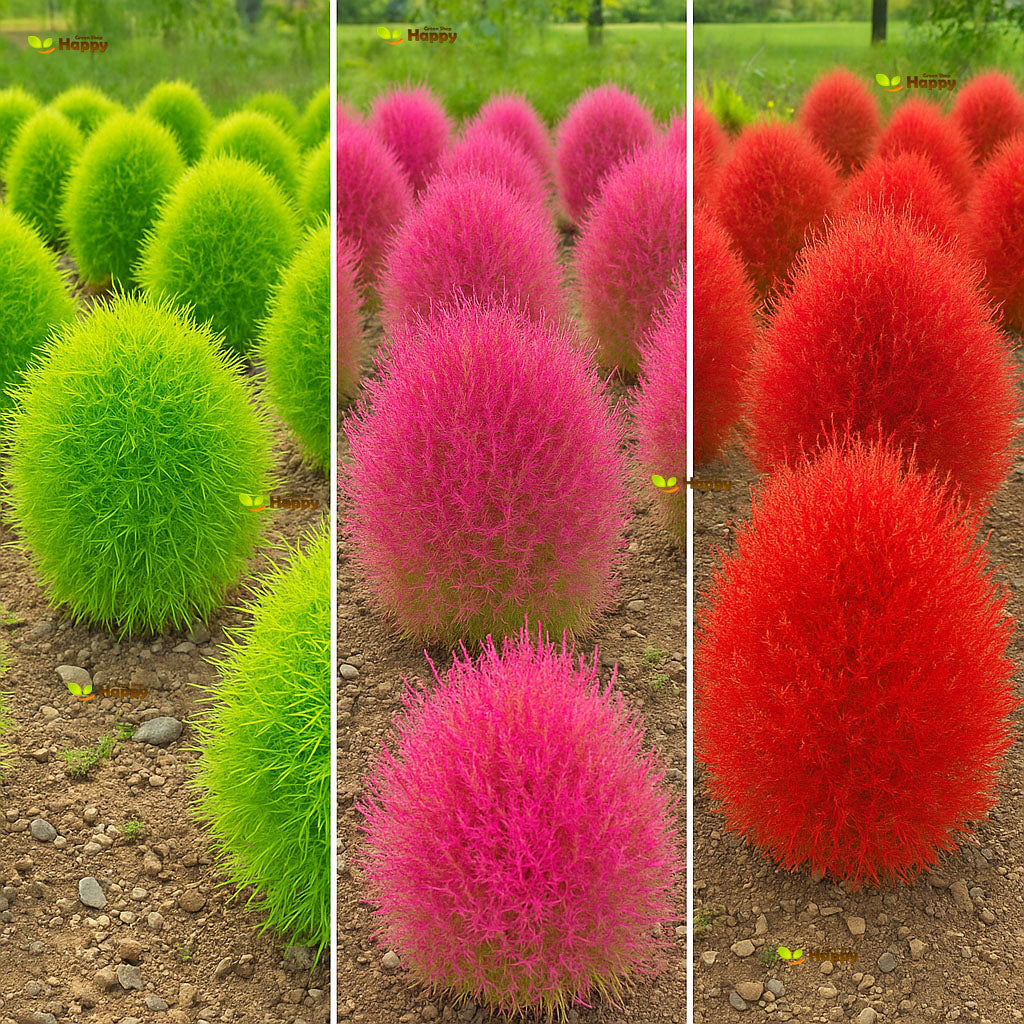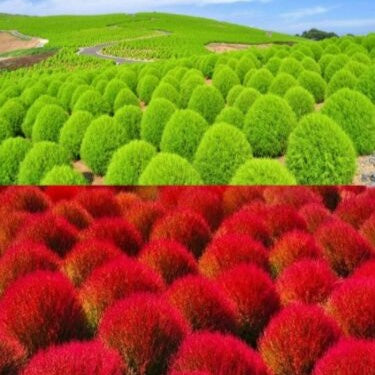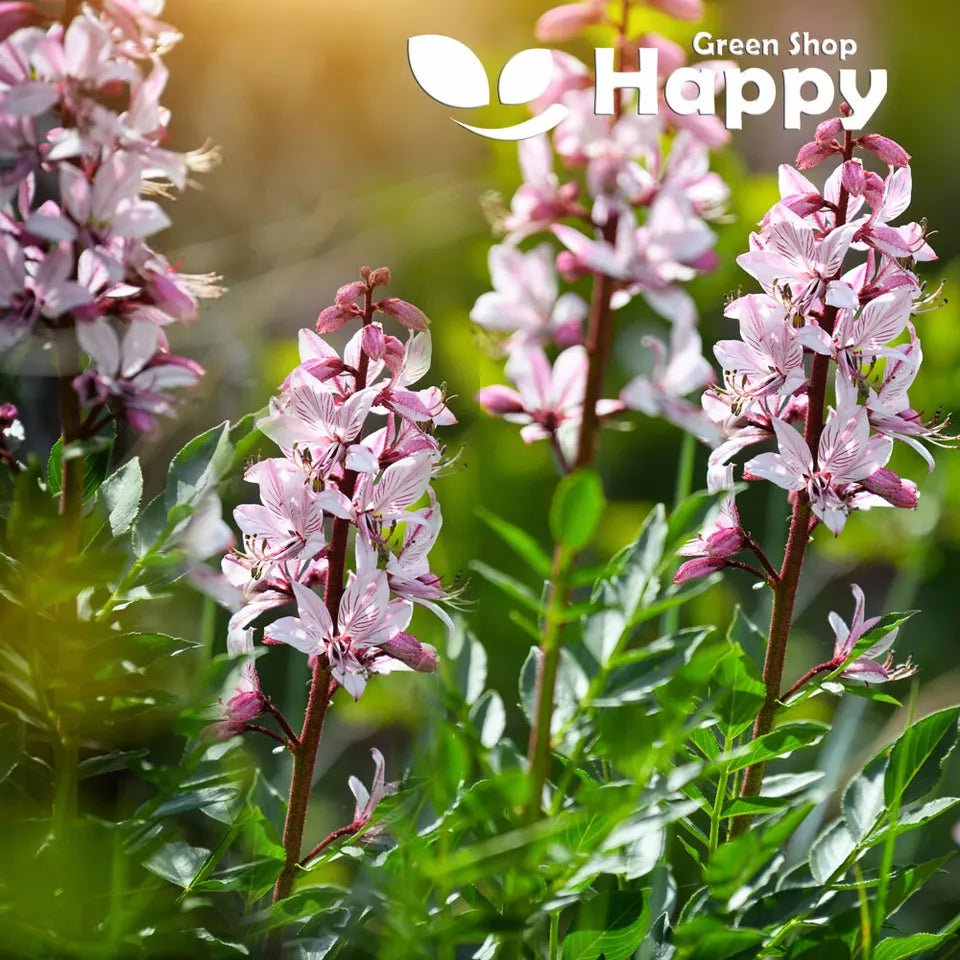Sort by:
1113 products
1113 products
Broad Bean ‘Windsor’ Seeds (Vicia faba)
Grow hearty, nutritious beans with Broad Bean ‘Windsor’ (Vicia faba). This classic variety produces large, flavorful beans ideal for fresh eating, cooking, or freezing. Hardy and easy to grow, it thrives in temperate climates and enriches the soil with nitrogen, making it perfect for vegetable gardens and crop rotation.
How to Grow
-
Sow seeds directly outdoors from early spring to late spring.
-
Use well-drained, fertile soil in full sun to partial shade.
-
Plant seeds 5 cm deep and 15–20 cm apart in rows 50 cm apart.
-
Water regularly to keep soil moist but not waterlogged.
-
Support taller plants with stakes if necessary.
-
Harvest beans when pods are well-filled but still tender.
Key Features
-
Large, flavorful broad beans
-
Hardy and easy-to-grow variety
-
Ideal for fresh eating, cooking, or freezing
-
Enriches soil with nitrogen for crop rotation
-
Reliable and productive in temperate climates
Ideal For
-
Vegetable gardens and allotments
-
Fresh harvest, cooking, and freezing
-
Crop rotation and soil improvement
-
Companion planting with nitrogen-demanding crops
Sowing
-
Best time: Early to late spring outdoors
-
Depth: 5 cm
-
Spacing: 15–20 cm apart in rows 50 cm apart
-
Prefers full sun to partial shade and fertile, well-drained soil
Quick Tip
-
Sow successive batches every 2–3 weeks for a longer harvest period.
Broccoletto 'Quarantino' – Seeds
(Brassica rapa) – Traditional Italian Spring Green
Broccoletto 'Quarantino' is a classic Italian leafy vegetable, prized for its tender, flavorful shoots and leaves. Belonging to the Brassica rapa family, this variety is fast-growing and ready to harvest in just 40 days – hence the name Quarantino (“forty days”). It is widely used in traditional Italian cuisine, either lightly steamed, sautéed with olive oil and garlic, or added to soups and pasta dishes.
Key Features
-
Type: Hardy leafy green (annual/biannual)
-
Growth: Vigorous, compact, fast-maturing (around 40 days)
-
Flavor: Tender, slightly peppery and nutty taste
-
Harvest: Young leaves and shoots for continuous picking
-
Use: Italian cuisine, stir-fries, soups, pasta, and side dishes
Ideal For
-
Traditional Italian cooking
-
Cut-and-come-again harvests
-
Quick, reliable leafy green supply
-
Kitchen gardens and allotments
Sowing & Growing
-
Sow outdoors: March–September, in rows or broadcast.
-
Spacing: 20–30 cm between plants.
-
Soil: Fertile, well-drained soil enriched with compost.
-
Sunlight: Full sun to partial shade.
-
Harvest: From 40 days after sowing, cut young shoots regularly to encourage new growth.
Care Tips
-
Keep soil moist for tender leaves.
-
Harvest frequently to prolong production.
-
Best enjoyed fresh – tender shoots have peak flavor.
Broccoletto 'Centoventino' – Seeds (Brassica rapa)
Broccoletto 'Centoventino' is a traditional Italian sprouting broccoli variety, producing tender, thin stalks with small, flavorful florets and abundant leafy greens. Known for its quick growth and delicate, slightly sweet taste, it is ideal for sautéing, steaming, and stir-fries. A versatile, cool-season crop, perfect for home gardens and allotments.
How to Grow
-
Sow seeds indoors from February to April or directly outdoors from March to May.
-
Sow 1–2 cm deep in fertile, well-drained soil.
-
Thin seedlings to 25–30 cm apart for optimal growth.
-
Prefers full sun and regular watering.
-
Harvest young shoots and florets continuously for best flavor.
Key Features
-
Traditional Italian sprouting broccoli
-
Tender stalks with small, flavorful florets
-
Slightly sweet, delicate flavor
-
Fast-growing and productive
-
Ideal for sautéing, steaming, and stir-fries
Ideal For
-
Home gardens and allotments
-
Fresh cooking, steaming, and sautéing
-
Cool-season planting and continuous harvest
Sowing & Harvest
-
Sow: February to May
-
Depth: 1–2 cm
-
Spacing: 25–30 cm
-
Harvest: May to October
Quick Tip
-
Harvest young shoots regularly to encourage new growth and maintain tender texture.
Brussel Sprout 'Casiopea' – Seeds (Brassica oleracea)
The Brussel Sprout 'Casiopea' is a high-yielding variety producing uniform, medium-sized sprouts with firm, dense heads and excellent flavor. Known for its reliable growth and resistance to bolting, it thrives in cooler weather, making it ideal for autumn and winter harvests. Perfect for roasting, steaming, or sautéing, this variety is a favorite for home gardens and allotments.
How to Grow
-
Sow seeds indoors from February to March or directly outdoors from March to April.
-
Plant 1–2 cm deep in trays or modules and transplant when seedlings are strong.
-
Space plants 50–60 cm apart in fertile, well-drained soil with full sun.
-
Support plants if needed, and maintain regular watering.
-
Harvest sprouts from the base upwards as they mature.
Key Features
-
High-yielding, uniform sprouts
-
Firm, dense heads with excellent flavor
-
Resistant to bolting and suited for cooler weather
-
Ideal for autumn and winter harvests
-
Versatile for roasting, steaming, and sautéing
Ideal For
-
Autumn and winter vegetable gardens
-
Roasting, steaming, or sautéing
-
Home gardeners seeking reliable, flavorful sprouts
Sowing & Harvest
-
Sow: February to April
-
Spacing: 50–60 cm between plants
-
Harvest: September to December
Quick Tip
-
For sweeter sprouts, leave them on the plant until after a light frost—it enhances flavor and texture.
Pointed Red Cabbage ‘Kalibos’ – Seeds
(Brassica oleracea L.)
Pointed Red Cabbage ‘Kalibos’ is an exceptional variety combining the sweet flavor of pointed cabbage with the deep red color of traditional red cabbage. The tight, conical heads are medium-sized, firm, and full of crisp, tender leaves with a mild, slightly sweet taste—perfect for salads, coleslaws, and light cooking.
Key Features
-
Type: Red pointed cabbage
-
Head Shape: Conical, medium-sized, dense
-
Color: Deep purple-red
-
Taste: Sweet, mild, and crisp
-
Days to Maturity: 110–120 days
-
Harvest Period: Late summer to autumn
-
Storage: Good short-term storage variety
Ideal For
-
Home gardens and allotments
-
Fresh salads and coleslaws
-
Cooking, fermenting, and pickling
Sowing & Growing
-
Sow indoors: February – April
-
Transplant outdoors: April – May
-
Harvest: August – October
-
Spacing: 40 × 50 cm
-
Position: Sunny, sheltered spot
-
Soil: Fertile, moist, well-drained soil enriched with compost
Care Tips
-
Keep soil consistently moist for tender heads.
-
Apply organic fertilizer or compost during growth.
-
Protect from cabbage butterflies with netting.
Bunny’s Tail Grass Seeds (Lagurus ovatus)
Bunny’s Tail Grass is a delightful ornamental grass grown for its soft, fluffy seed heads that resemble little rabbit tails. Compact and charming, this annual grass produces tufted, silky panicles that turn from pale green to creamy white as they mature. It is excellent for borders, containers, wildlife gardens, and makes a superb addition to dried flower arrangements. Easy to grow and highly versatile, it adds both movement and texture to summer displays.
What Makes It Special
-
Unique fluffy “bunny tail” seed heads
-
Excellent for fresh or dried flower arrangements
-
Compact and suitable for pots or borders
-
Loved for adding texture to floral displays and garden edges
Key Features
-
Botanical name: Lagurus ovatus
-
Common name: Bunny’s Tail Grass / Hare’s-tail Grass
-
Seed count: Approx. seeds per pack
-
Height/Spread: 30–45 cm tall, 20–30 cm spread
-
Position: Full sun; well-drained soil
-
Flowering period: June–September
Ideal For
-
Borders and edging
-
Patio containers
-
Dried flower arrangements
-
Wildlife-friendly gardens
-
Coastal and low-maintenance planting
Sowing Instructions
-
When to sow: March–May indoors or direct sow outdoors in April–June
-
How to sow:
-
Sow thinly on the surface of well-drained seed compost or prepared soil
-
Lightly cover with fine soil or vermiculite
-
Keep moist until germination (10–20 days)
-
-
Transplant/Thin: Space plants 20–25 cm apart
-
Care: Minimal care needed; drought-tolerant once established. Cut seed heads for drying when fluffy.
Burning Bush – Seeds (Kochia trichophylla)
Create a dazzling garden display with the Burning Bush, a striking ornamental foliage plant. Starting as soft green mounds in summer, the plants transform into fiery shades of crimson and scarlet in autumn, giving the effect of glowing flames. Its uniform, bushy habit makes it perfect for edging, bedding, or mass plantings.
What Makes It Special
-
Unique seasonal color transformation: green to brilliant red
-
Neat, globe-shaped plants with fine feathery foliage
-
Low maintenance and fast growing
Key Features
-
Height: 50–90 cm
-
Annual, easy to grow
-
Provides brilliant late-season color
-
Excellent for borders, hedging, and ornamental accents
Ideal For
-
Bedding displays and edging
-
Focal points in mixed borders
-
Striking mass plantings or container gardening
Sowing
-
Sow outdoors directly in April–May after frost risk has passed
-
Scatter thinly and cover lightly with soil
-
Germination: 7–14 days at 18–22°C
-
Thin seedlings to 30–40 cm apart for strong bushy growth
Burning Bush – Seeds (Kochia scoparia)
Burning Bush (Kochia scoparia) is a fast-growing annual known for its striking foliage that transitions from bright green in summer to fiery red in autumn. Its bushy, compact growth habit makes it perfect for borders, mixed beds, and accent planting. Easy to grow and drought-tolerant, it provides long-lasting color and texture while attracting pollinators.
Why Grow "Burning Bush"
-
Bright green foliage turning fiery red in autumn
-
Bushy, compact habit ideal for borders and accent planting
-
Fast-growing and drought-tolerant
-
Adds long-lasting color and texture to gardens
Key Features
-
Type: Annual (Kochia scoparia)
-
Height: 50–100 cm
-
Flowering/Foliage color: Summer green, autumn red
-
Position: Full sun
-
Uses: Borders, mixed beds, accent planting, pollinator-friendly gardens
Ideal For
-
Borders and mixed garden beds
-
Autumn color displays
-
Drought-tolerant and low-maintenance gardens
-
Pollinator-friendly landscapes
Sowing & Growing
-
Sow outdoors: March–May in prepared soil
-
Germination: 10–15 days at 18–22°C
-
Thin seedlings to 25–30 cm apart
-
Prefers full sun and well-drained soil
-
Water moderately until established
Burning Bush – Seeds (Dictamnus fraxinella)
Burning Bush (Dictamnus fraxinella) is a striking perennial known for its tall spikes of fragrant, pink to white flowers that bloom from late spring to early summer. Its aromatic foliage releases a citrus-like scent when touched, adding sensory interest to borders and cottage gardens. Hardy and long-lived, this unique plant attracts pollinators and makes an eye-catching addition to perennial beds.
Why Grow "Burning Bush"
-
Tall spikes of fragrant pink to white flowers
-
Aromatic foliage with a citrus-like scent
-
Hardy, long-lived perennial
-
Attracts bees, butterflies, and other pollinators
Key Features
-
Type: Perennial (Dictamnus fraxinella)
-
Height: 60–100 cm
-
Flowering: Late spring to early summer
-
Position: Full sun to partial shade
-
Uses: Borders, cottage gardens, perennial beds, pollinator gardens
Ideal For
-
Adding vertical interest and fragrance to borders
-
Cottage and mixed perennial garden designs
-
Pollinator-friendly planting
-
Gardeners seeking unique, low-maintenance perennials
Sowing & Growing
-
Sow indoors: 6–8 weeks before last frost
-
Sow outdoors: After frost danger has passed
-
Germination: 14–28 days (may require cold stratification)
-
Space seedlings: 30–40 cm apart
-
Prefers well-drained soil and sunny to partially shaded locations
Showing 135/1113




